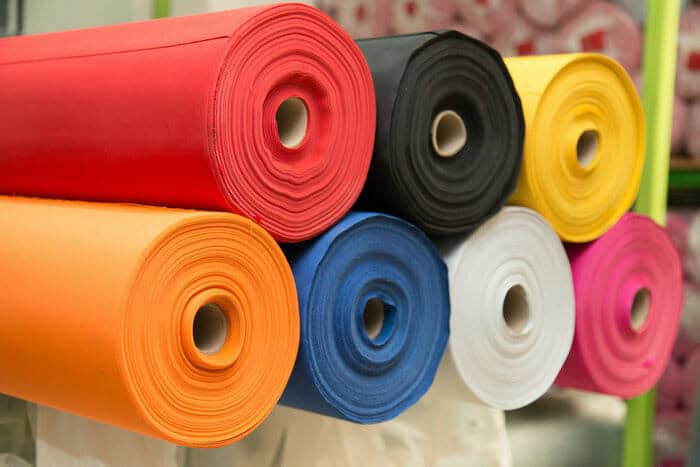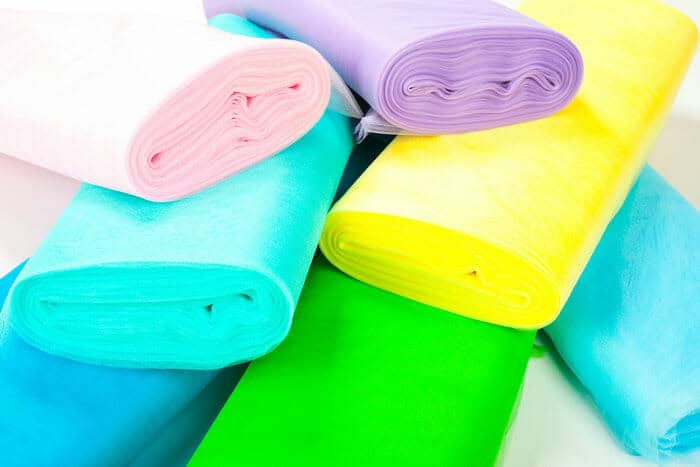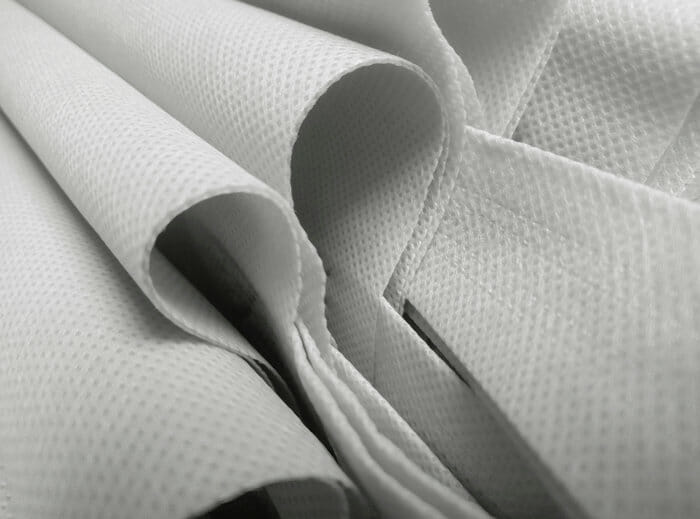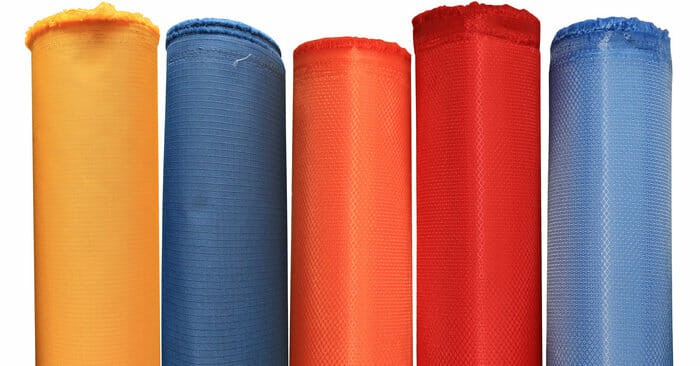Nonwoven textiles differ from conventional fabrics in that they are manufactured using mechanical, thermal, or chemical techniques that do not require weaving or yarn production. Instead, the fibers are bonded together through their inherent friction or entanglement, resulting from these alternative methods.

Unlike traditional fabrics, nonwoven fabrics are produced directly from separate fibers rather than spun or woven.
History of non woven fabrics
The origins of nonwovens can be traced back to the recycling of fibrous waste and lower-quality fibers left over from industrial processes such as weaving and leather processing. Nonwovens also emerged due to raw material restrictions, especially during and after the Second World War and in communist-dominated countries in Central Europe.

In ancient times, natural fibers like reeds, grasses, and rushes were woven together by knitting to create floor coverings or mats.
During the 19th century, England was a major textile-producing country, and Garnett, a textile engineer, observed that significant amounts of fiber were discarded as trim waste. Garnett developed a carding device to address this issue that could shred the waste material into fibrous form. These fibers were then utilized as a filling material for pillows.
Garnett’s machine, although substantially modified, still bears his name and is an essential component in the nonwoven industry. Later, manufacturers in Northern England mechanically bound these fibers together using needles or chemically bound them using glue, creating batts that were the forerunners of modern nonwovens.
Today, nonwovens are produced using various methods, including needle punching, hydroentangling, and electrospinning. The global nonwoven industry continues to grow, with innovations and technologies driving further development and expansion of nonwoven applications.
Here are some overtime developments:
The 1840s: The first nonwoven fabrics were produced using natural fibers such as wool and cotton, which were felted together to create a material.
1909: Dr. Harry Dean of East Walpole, Massachusetts, received the first patent for a nonwoven fabric. He used pressing woolen fibers together to create a strong, durable material.
The 1920s: The use of nonwoven fabrics expanded into the automotive industry, where they were used for insulation and soundproofing.
The 1930s-1940s: Synthetic fibers such as nylon and polyester were developed, leading to new non woven materials. Nonwovens were used in various industries, including automotive, construction, and healthcare.
The 1950s-1960s: New methods of producing non woven fabrics were invented, including meltblown and spunbond processes. These processes created lighter and more durable nonwoven materials suitable for a wider range of applications.
1961: DuPont introduced Tyvek, a high-density polyethylene nonwoven material,used for house wrap, protective clothing, and other applications.
The 1970s-1980s: Non wovens became increasingly popular in the hygiene industry, where they were used to produce disposable diapers, feminine hygiene products, and wipes. The use of nonwovens also expanded into other sectors, such as construction, automotive, and agriculture.
1990s-present: The nonwoven industry continued to grow, with innovations and technology driving further development and expansion of nonwoven applications.
How is a non woven fabric made?
The production process starts with the chemical process which involves using an adhesive to bond the fibers together, while the mechanical process uses needling, fluid jet entanglement, or stitching to bond or interlock the fibers. In the thermal bonding process, a powder, paste, or polymer melt binder is applied and melted onto the web by increasing the temperature.
In addition, fluid fiber solutions made of chemical polymers can be shaped into flat sheets or films, which are used to make nonwoven plastics, pleather, and vinyl materials. These sheets can be used as is or adhered to knitted or woven backings.
Characteristics of nonwoven fabrics

Nonwovens have the following characteristics:
- Flat and flexible: Usually flat and flexible, making them versatile for various applications.
- Thickness: Can be of any thickness, depending on the application.
- No raveling or fraying: Do not ravel or fray at the cut edges, giving them a long product use life.
- Easy care: Most are easy to care for, and they can be machine-washed and dry-cleaned.
- Shrinkage: Nonwovens can shrink in the wash, depending on the type of fiber used.
- Porosity: Most are porous, which makes them ideal for applications that require breathability.
- Absorbent and stretchable: Web-like nonwovens made from natural fibers are porous, can stretch, and are biodegradable; quite a good balance for a fabric.
- Lack of drape: Nonwovens may not have the drape of woven and knitted fabrics, but they are still suitable for various applications where this characteristic is unnecessary.
Benefits of non woven fabric

Nonwoven fabrics offer several benefits, including:
- Cost-effective: Less expensive to produce than woven or knitted fabrics, making them a cost-effective option for many applications.
- Versatility: Can be produced in various weights, thicknesses, and compositions, making them suitable for multiple end uses.
- Durability: Many are engineered to be strong and durable. They create fabrics suited for use in products that must withstand heavy wear and tear.
- Absorbency: Those made from natural fibers are often highly absorbent, making them suitable for use in products like wipes, diapers, and sanitary pads.
- Customizability: Can be tailored to meet specific performance requirements, such as filtration, liquid repellency, and flame resistance for use in specific jobs.
- Environmentally friendly: Can be made from recycled materials and are often biodegradable, making them a more environmentally friendly choice than some other materials.
- Ease of care: Machine washable and dry-cleanable, making them easy to care for.
- Health and safety: Can be engineered to provide specific levels of protection against hazards like bacteria, viruses, and chemicals, making them suitable for use in medical and protective equipment.
Applications of non woven Fabrics
Some of the common applications of nonwoven fabrics include:
Personal care and hygiene: Baby diapers, feminine hygiene products, adult incontinence items, dry and wet pads, nursing pads, nasal strips, bandages, and wound dressings.
Healthcare: Operation drapes, gowns, packs, face masks, dressings, swabs, ostomy bag liners, isolation gowns, surgical gowns, surgical drapes and covers, surgical scrub suits, and caps.
Clothing: Interlinings, insulation, protective clothing, industrial workwear, chemical defense suits, shoe components, etc.
Home: Wipes and dusters, tea and coffee bags, fabric softeners, food wraps, filters, bed, table linen, etc.
Automotive: Boot liners, shelf trim, oil, cabin air filters, molded bonnet liners, heat shields, airbags, tapes, decorative fabrics, etc.
Construction: Roofing and tile underlay, thermal and noise insulation, house wrap, understanding, drainage, etc.
Geotextiles: Asphalt overlay, soil stabilization, drainage, sedimentation, erosion control, etc.
Filtration: HEPA, ULPA filters, gasoline, oil, air filters, water, coffee, tea bags, liquid cartridge, bag filters, vacuum bags, allergen membranes, or laminates with nonwoven layers.
Industrial: Cable insulation, abrasives, reinforced plastics, battery separators, satellite dishes, artificial leather, air conditioning, and coating.
Agriculture, home furnishing, leisure and travel, school and office: Soil stabilizers, roadway underlayment, foundation stabilizers, erosion control, canals construction, drainage systems, geomembranes protection, frost protection, agriculture mulch, pond and canal water barriers, sand infiltration barrier for drainage tile.
Types of non woven fabric
Various kinds of nonwoven fabrics exist based on the method used in their production.

Wet-laid nonwovens
Wet-laid is non woven fabric produced through a mechanical procedure called wet laying, which resembles paper-making except for using distinct raw materials. The fibers are converted into a slurry, which is conveyed to a mesh-forming apparatus to create a wet sheet that takes the shape of a fabric. This procedure is generally succeeded by adhesive bonding and is employed to manufacture felt and felted fabrics.
Spun laid nonwovens
Spun-laid nonwovens are produced by spinning fibers or polymer slices through spinnerets to create continuous filaments. These filaments are then cooled, stretched by air, and deposited as a random web onto a moving sieve belt. The conveyor belt transports the web to the bonding zone, where it’s bonded through a thermal, mechanical, or chemical process. One example of an interfacing material made using this technique is spun-bonded nonwoven.
Stitch bond nonwovens
Stitch bond is non woven fabric created on a weaving machine, where the web is secured and combined together using chain-stitch seams. The resulting material will showcase visible stitching patterns on one or both surfaces. Stitch bonding imparts a smoother and gentler texture to the web. Batting scrim is an example of a stitch-bonded material.
Solvent bond nonwovens
A blend of acrylic and polyester fibers is formed into a web, then a precise quantity of solvent is applied. The solvent works by gently softening the surface of the fibers, leading to their bonding.
Thermal bond nonwovens
Thermal bond nonwovens comprise thermoplastic fibers or thermoplastic powders, such as polyester, polypropylene, and nylon.
There are four main methods of thermal bonding:
- Air bonding involves applying heated air to the web on a conveyor belt.
- Impingement bonding requires placing the web in an oven and directing hot air at it from nozzles.
- Calendar bonding involves passing the web between heated rollers.
- Ultrasonic bonding employs a device that utilizes ultrasonic frequencies to create vibrational motion, facilitating bonding through energy conversion.
Chemical bond nonwovens
Produced by coating the surface of the web with a binder, such as resin or latex. An instance of chemically bonded batting is resin-bonded batting.
There are four chemical bonding methods: print bonding, spray bonding, saturation, and foam bonding. Print bonding is achieved by using either gravure roll printing or screen printing. Spray bonding involves spraying latex onto the web, situated on a conveyor belt. In saturation bonding, the web is immersed directly into a latex tank and dried in a dryer. Foam bonding imparts softness and resilience to the fabric.
Hydro entangled nonwovens
Hydraulic nonwovens are created by directing high-pressure water jets onto the surface of the web, which is moving rapidly on a conveyor belt. The level of pressure applied to the web determines the quality of bonding.
Carded nonwovens
These are made using a carding machine to comb the fibers into a web, oriented in the machine’s direction, resulting in a highly durable nonwoven material. The other method is called air-laid. Nonwoven web materials can be produced using either of these techniques.
Nonwoven composite fabrics
Multilayer nonwovens, also known as multiple-fiber composite nonwovens, consist of several layers of diverse types of fibers that offer different functionalities. Each layer of the fabric imparts specific characteristics, such as water repellency or fire retardancy.

